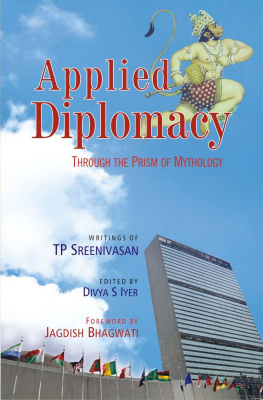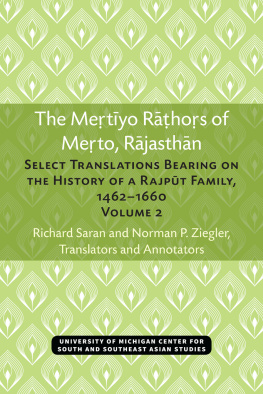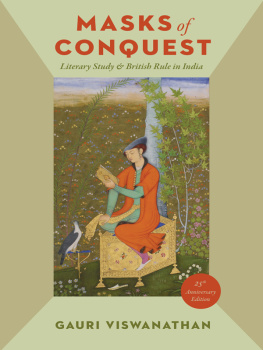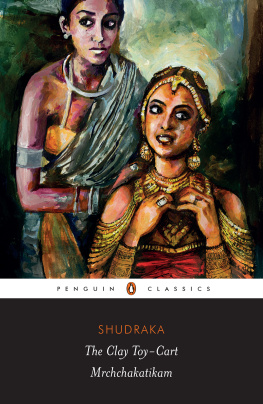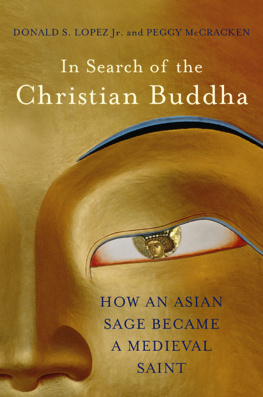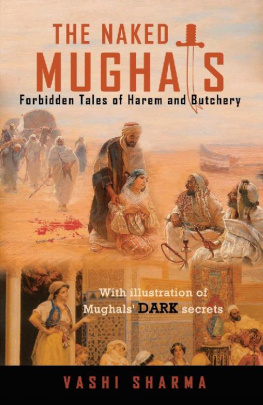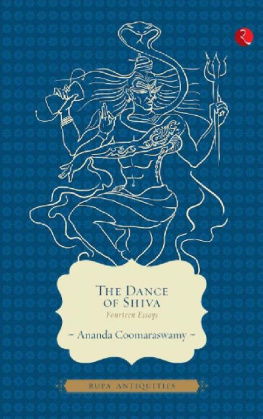THE MANY LIVES OF
A RAJPUT QUEEN
Heroic Pasts in India
c. 15001900
Ramya Sreenivasan

Copyright 2007 Ramya Sreenivasan
Printed in the United States of America
13 12 11 10 09 08 07 5 4 3 2 1
Published in South Asia by Permanent Black
D-28 Oxford Apts., 11 L.P. Extension, Delhi 110092
Published in the United States of America by
University of Washington Press
PO Box 50096, Seattle, WA 98145-5096
www.washington.edu/uwpress
All rights reserved. No part of this publication may be reproduced or transmitted in any form or by any means, electronic or mechanical, including photocopy, recording, or any information storage or retrieval system, without permission in writing from the publisher.
Library of Congress Cataloging-in-Publication Data
Sreenivasan, Ramya.
The many lives of a Rajput queen : heroic pasts in India c. 1500-1900 / Ramya Sreenivasan.
p. cm.
Based on the authors thesis (Ph. D.Jawaharlal Nehru University).
Includes bibliographical references and index.
ISBN-13: 978-0-295-98732-3 (hardback : alk. paper)
ISBN-13: 978-0-295-98760-6 (pbk. : alk. paper)
ISBN-10: 0-295-98732-4 (hardback : alk. paper)
ISBN-10: 0-295-98760-X (pbk. : alk. paper)
1. IndiaHistoriography. 2. Padmavati, Queen, consort of Ratana Simha I, Rana of Chitor, fl. 1303In literature. 3. National characteristics, East Indian, in literature. 4. Collective memoryIndiaHistory. I. Title.
DS435.S68 2007
954.0234072dc22 2007010377
The paper used in this publication is acid-free and 90 percent recycled from at least 50 percent post-consumer waste. It meets the minimum requirements of American National Standard for Information SciencesPermanence of Paper for Printed Library Materials, ANSI Z39.48-1984.
Contents
Acknowledgments
THIS BOOK WOULD NOT HAVE BEEN POSSIBLE WITHOUT the foundational scholarship of Hazariprasad Dwivedi, Mataprasad Gupta, Vasudev Sharan Agrawal, Acharya Jinavijay Muni, Agarchand Nahta, Bhanwarlal Nahta, Shyam Manohar Pandey, Brahmohan Jawaliya, Narain Singh Bhati, and Hukam Singh Bhati. Since the 1940s, these pioneers have recovered and explored an astonishingly rich corpus of literary and historical materials from the medieval and early modern periods, both for Rajasthan and the Hindi belt.
The book grew out of a PhD dissertation at Jawaharlal Nehru University, New Delhi. I am grateful to my advisors, Harbans Mukhia, Meenakshi Mukherjee, and G.J.V. Prasad, for their guidance during my initial forays into cultural history. I am especially indebted to Professor Mukhia for introducing me to the complexities of Mughal history. My early thinking on the historicity of narratives and culture was influenced by many rich discussions with Svati Joshi, Uma Chakravarti, the late Sudesh Vaid, Carla Petievich, and Kathryn Hansen. I am grateful to all of them. I owe a special debt of gratitude to Cynthia Talbot who read an early draft, and helped me to strengthen many a tentative formulation and achieve greater clarity. I also benefited from the critiques of Kumkum Sangari and Monica Juneja, who helped me re-evaluate my approach to writing cultural history as I began the task of transforming the dissertation into a book.
Indrani Chatterjee read several drafts and offered many, many suggestions on the content and organization, that led to several new insights and a stronger argument. I am deeply indebted to her. I am also deeply grateful to Sumit Guha and K. Sivaramakrishnan for their encouragement, careful reading of earlier drafts, and substantive critiques. The two anonymous referees for Permanent Black suggested ways of contextualizing the argument for readers not familiar with South Asian history: the final structure of the book owes much to their constructive criticisms.
David Curley, Frances Taft, Gary Handwerk, David Gilmartin, and Roger Des Forges read parts or all of earlier versions of the manuscript: their comments have helped enrich the argument. Thanks also to Susan Cahn and Niharika Banerjee for their careful reading of parts of the finished manuscript. Rukun Advani of Permanent Black readily agreed to consider this work for publication after peer review, and then waited patiently for several years for the manuscript to materialize. Both he and Michael Duckworth at the University of Washington Press have been very supportive of an author publishing her first book. Aditya Behl, Thomas de Bruijn, and Prachi Deshpande generously shared unpublished work with me. I am particularly indebted to Behl and de Bruijn for their suggestive insights on locating Jayasi within his historical context.
I am grateful to Vijaya Ramaswamy, Monica Juneja, Kumkum Roy, Michelle Maskiell, Vasudha Dalmia, Phillip Wagoner, Keith Snodgrass, Frances Taft, and Dan White for inviting me to present parts of this work at the following venues, where it benefited from the critical responses of a wider audience: Jawaharlal Nehru University, Delhi University, have appeared in A Wilderness of Possibilities: Urdu Studies in Transnational Perspective, edited by Kathryn Hansen and David Lelyveld (Oxford University Press, 2005).
I thank Miranda House for the study leave necessary to pursue this research, and the Charles Wallace India Trust for a grant to consult archives in London. I am indebted to the South Asia Center at the Universiy of Washington, the History Department at Kenyon College, and the History Department at the University at Buffalo for their support during the writing of this book. I am also grateful for the assistance provided by the Julian Park Fund, College of Arts and Sciences, University at Buffalo.
Professor Mohammad Arif arranged accommodation for me at Varanasi and shared his knowledge of contemporary local politics at Jayas. Jason Freitag generously directed me to an uncatalogued box of manuscript notebooks belonging to James Tod at the Royal Asiatic Society, London. The staff at the British Library (Oriental and India Office Collections), the Royal Asiatic Society, London, Nagari Pracharini Sabha, Varanasi, Acharya Shri Kailassagarsuri Gyan Mandir (Koba, Gujarat), and the Rajasthan Oriental Research Institute, Jodhpur, made the task of tracing primary sources less onerous. Mohabat Singh Rathor at the Pratap Shodh Sansthan, Bhupal Nobles College, Udaipur, directed me to the remarkable Chitor Udaipur Patnama some years before it was published, while Ishwar Singh Ranavat and Mrs Dhak made special arrangements for me to copy large portions of the manuscript. I am indebted to Rajendra Singhvi of Rajasthani Granthagar, Jodhpur, for providing me with several primary and secondary sources on Rajasthan. Dilip Basu allowed me to borrow a treasured heirloomhis copy of the original edition of Yajneshwar Bandopadhyays translation of Tod, published in 1884. The Euless Public Library, the University of Washington Libraries, Kenyon College Library, and the University at Buffalo Libraries procured numerous books through inter-library loan, enabling me to complete the research and writing of this book. I am grateful to all of them.
I thank my parents, Geetha, Rama, and Minnie for their help. Also, special thanks to Sreeni: his laymans healthy curiosity and persistent questions made the writing of this book almost fun.
My grandmothers urged me to study, to compensate for their lack of formal education. This book is dedicated to them and to Sudesh Vaid, from whom I learnt much.
I, of course, remain solely responsible for all errors and omissions.
Note on Transliteration and Usage
On the assumption that readers of Indian languages do not require diacritics and others will find them cumbersome, I have used the customary English spelling for Indian language words and place names prevalent in India.


